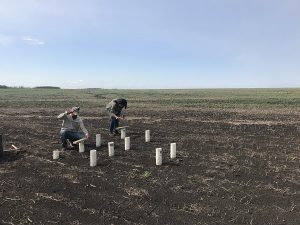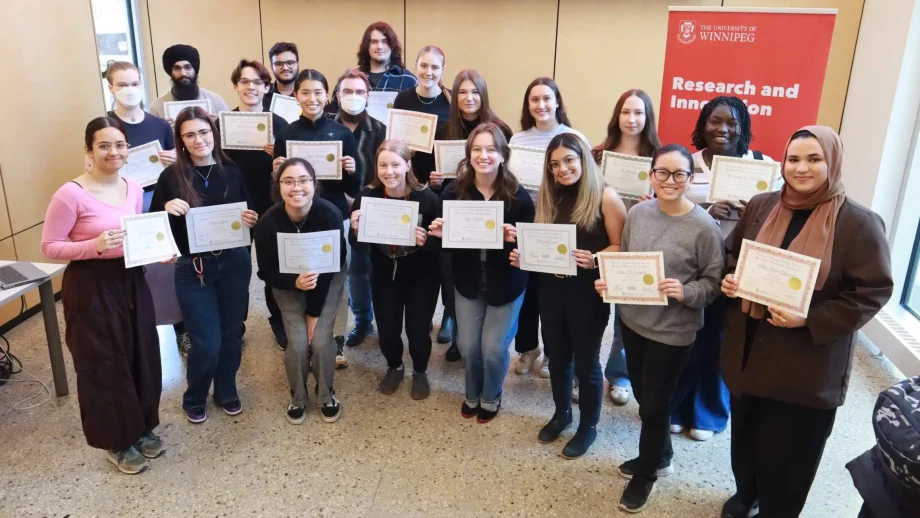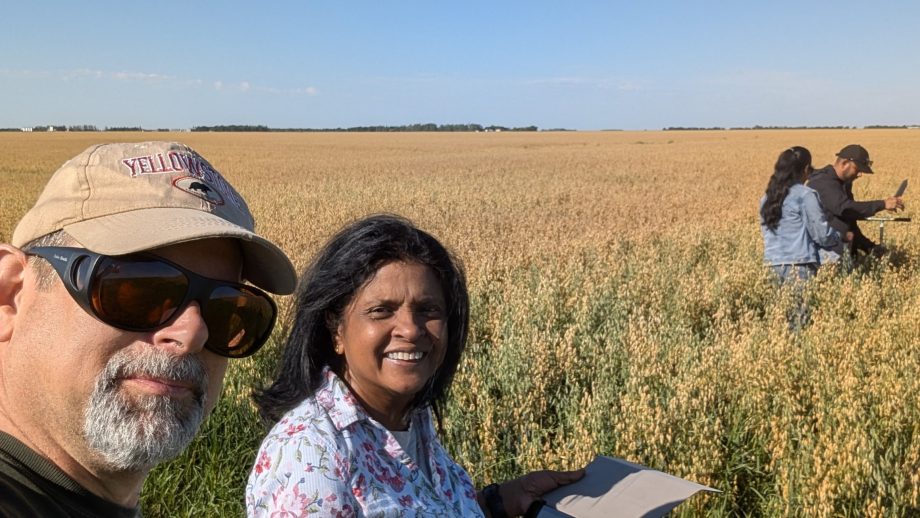Dr. Darshani Kumaragamage is dispelling the myth that farmers and livestock producers are to blame for increased phosphorus release into waterways, leading to algae blooms in Lake Winnipeg.
Through a Natural Sciences and Engineering Research Council of Canada (NSERC) Discovery Grant, the associate professor of environmental studies and sciences has been looking at ways farmers can reduce phosphorus runoff during the spring snowmelt.
“Most of the research conducted elsewhere has been trying to minimize erosion and the water running off, and, by doing that, they have been able to really control phosphorus coming from soils to waterways,” she explained. “What we have (here on the prairies) is a unique situation, because most of our phosphorus gets into the lake during the snowmelt runoff.”
But how does phosphorus get into the snowmelt runoff? Kumaragamage says when snowmelt water is stagnant on a field for as long as two or three weeks, soil releases phosphorus into the overlying water.
And when the snowmelt water goes into waterways, that’s when the issues begin.
“We found that the overlying water had a phosphorus concentration about 15-times more when it was flooded for about six to seven weeks, and it continued to increase over time,” she said.
Along with the NSERC Discovery Grant, Environment Canada then awarded her a grant to look at certain soil amendments, and if they could reduce the amount of phosphorus that flows into flood water.
The idea, she said, was if farmers could point out what areas in the field gets flooded during the spring, then an amendment can be applied to that soil to reduce phosphorus released from soils during the snowmelt.
Five amendments were studied, which included gypsum, alum, magnesium sulphate, ferric chloride, and calcium carbonate. However, it’s too early to say which is the most effective and practical to use without doing field trials.
The next step is to start working with more Manitoban farmers. The goal is to go to fields that flood and take snowmelt runoff samples with, and without soil amendments, and analyze for phosphorus.
Come spring 2021, Kumaragamage said work will shift to farmers’ fields where they will, hopefully, begin testing the amendments.
“I think it’s important to reduce the contribution of phosphorus into waterways,” she said. “If every sector minimizes their contribution, then we’ll be able to see a real reduction.”






